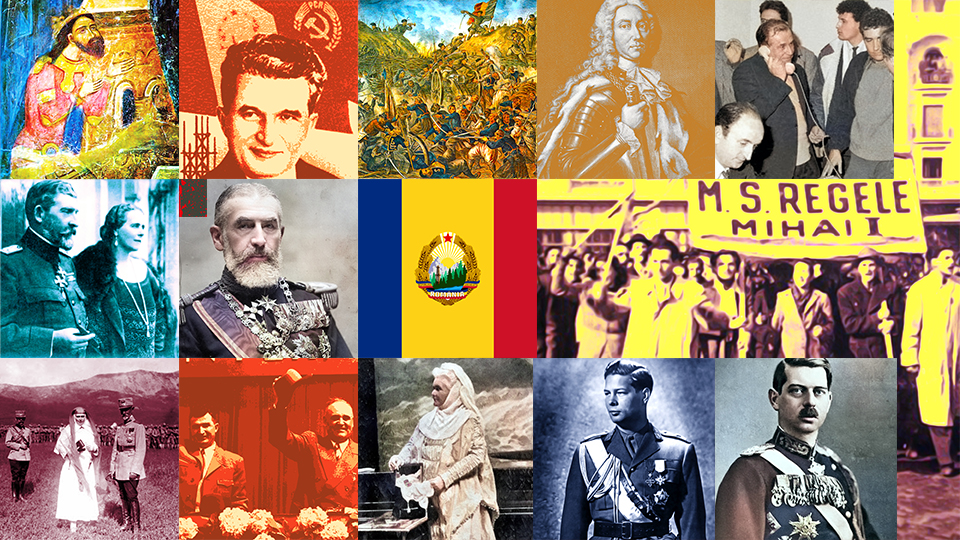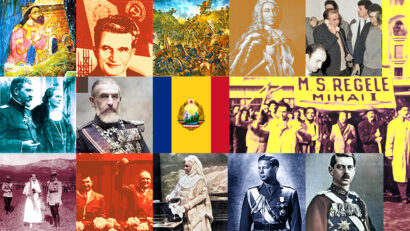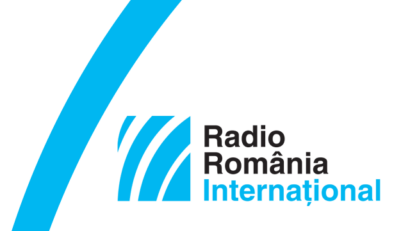The Romanian Communist Party’s illegal activity
The Romanian Communist Party was, since its creation, a terrorist organization placed at the service of the Soviet Union, which was a terrorist state.

Steliu Lambru, 22.09.2025, 14:00
On May 8, 1921, the far left of the Romanian Social Democratic Party voted to affiliate with the principles of The Third International and took the title of Communist Party of Romania (PCR). The PCR was a terrorist organization because it condemned the formation of Greater Romania in 1918 and sought its dismemberment. It campaigned for the autonomy of the Romanian provinces “until the total separation from the Romanian state,” considered an “imperialist state,” which had been formed “through the conquest of foreign territories.” The PCR campaigned for the elimination of capitalism, that is, the market economy, political multi-party system and private property.
The PCR was a terrorist organization because it not only campaigned for the dissolution of Romania at a declarative level, but had also taken action. They meant both “soft” actions such as the distribution of manifestos, and “hard” actions that meant armed rebellion, as was the Tatarbunar uprising of 1924, and economic blockade through strikes, as was the strike of 1933. The Law on Legal Entities, adopted on February 6, 1924, abolished extremist parties and organizations, and the PCR was among them.
In August 1944, when they emerged from illegality, the Romanian communists would follow the instructions of the Comintern. At the end of the war and after the installation of the communist regime, propaganda gave the ‘illegals’ an intangible prestige. Anton Moisescu, interviewed in 1995 by Radio Romania’s Oral History Center, remembered his illegal activity.
“I was in charge of the organization in Iaşi, especially of the student youth, and of the working youth in Iaşi. I was in charge of organizing student actions against the chauvinistic and racist manifestations of the Legionary Movement, which was quite strong in Iaşi. I was in charge of organizing the workers, the young workers from Nicolina, on the eve of the 1933 strike, organizing the working youth in Paşcani. On May 1, 1933, we organized the distribution of manifestos with general slogans, which were both in the country and abroad. We were demanding the freedom of organization of the workers, the legalization of the eight-hour workday, we were for the Three Eights, as we called them. We wanted eight hours of work, eight hours of rest, eight hours of recreation. We had wage demands for the workers, better working conditions, and so on. Then, in Iaşi, in addition to distributing manifestos, we also organized a stenciling action, writing slogans that were done with stencils and paint on fences, walls, etc. I had written ‘Long live May 1, the international day of those who work!’ and ‘Long live May 1! Workers fighting for eight hours of work, human wages, humane treatment in enterprises!’.”
Radu Bogdan, in the same year 1995, confessed the contribution he made to his comrades’ actions against Romania.
“When Vladescu-Racosa fell and was arrested in the spring of ’44, I was sitting in the same yard with him, my connections with the illegals ceased. That was a rule of conspiracy. One of my party connections was arrested, beaten, but he kept quiet. By keeping quiet, I was among those saved because I made my house available. That was one of my illegal activities, so that they would have a place where they could make fake identity cards, stamps and other things. Other actions were the distribution of anti-fascist manifestos. I don’t give a lot of credit to this activity, but one thing was certain: I knew that I was risking my life because, during the same period, three 16-year-old boys had been executed for distributing 1-leu banknotes with the stamp ‘Down with Antonescu’ . So, if I had been caught, it wouldn’t have gone well for me. Of course, there was a lot of unconsciousness involved. What did all this youth know about what was actually happening in the world?”
Mihai Roșianu, in 1971, on the 50th anniversary of the party’s founding, recalled how the future patriarch Justinian Marina had also taken on the aura of an illegals.
“In the ’36 For Peace’ action, we held a large gathering in Vâlcea and wrote a letter to the congress where the Rassemblement Universel pour la Paix (RUP) had been established in Paris, a letter also signed by the patriarch, who was then priest Marina. Our people were welcomed and entered the church yard, and the Security and the Police could not suspect, only the faithful could suspect. Our people went to the parish house, they had a secret room there where I also went when I wanted to take shelter. We held our meeting there, with delegates from all the counties of Oltenia. The District Committee was elected at that time and we found legal forms to take on the illegal, revolutionary, forms of struggle. The cultural centers were also organizations that covered our activity, those cultural centers that were run by communists we established as peasant organizations, with minutes and statutes, in which they considered themselves members. And so we made contacts in the masses.”
Only through a historical accident did the PCR eventually come to rule Romania. The period of illegal activity only outlined the horrors committed by the regime it established. (EE)






























